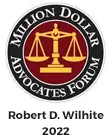 No official statewide minimum speed limit applies to all roads in Texas. However, some roads, like highways, may have posted minimum speed limits, which drivers must follow. Additionally, state law requires drivers to maintain a speed appropriate for the conditions.
No official statewide minimum speed limit applies to all roads in Texas. However, some roads, like highways, may have posted minimum speed limits, which drivers must follow. Additionally, state law requires drivers to maintain a speed appropriate for the conditions.
If you were injured in an accident involving a driver traveling too slowly, you must fully understand your legal rights. A Texas car accident lawyer can investigate the collision to determine whether the slow driver’s actions contributed to the crash and if they may be liable for your injuries and losses.
Does Texas Have Laws Against Driving Too Slow?
Texas addresses minimum speed requirements in Texas Transportation Code § 545.363. The statute prohibits drivers from traveling at a speed so slow that they impede the normal and reasonable traffic flow. If a driver is moving slower than the traffic flow, they must pull off the road to allow faster vehicles to pass, particularly when driving conditions allow safe passage. This law applies regardless of whether a posted minimum speed limit exists.
Additionally, Texas enforces a so-called “slowpoke law,” which requires drivers to stay out of the left lane if they are not passing other vehicles. The left lane, often called the “passing lane,” is reserved for faster-moving traffic. Drivers who linger in the left lane without passing can disrupt traffic flow, creating safety hazards and contributing to congestion.
These laws are intended to prevent traffic slowdowns and improve roadway safety. While they do not impose universal minimum speed limits, drivers must be mindful of how their speed impacts others.
What Does It Mean to Impede Traffic?
Drivers impede traffic when they move so slowly that they disrupt the normal flow of vehicles on the road. For example, a driver may fail to maintain a reasonable speed for the conditions or travel significantly below the posted speed limit without any justification. Driving slowly in clear weather on a straight stretch of highway or blocking the left lane without passing vehicles in the right lane are also examples of impeding traffic.
By law, drivers must adjust their speed to avoid interfering with other vehicles. Impeding traffic causes frustration and can increase the risk of collisions, especially on high-speed roads.
What Is the Penalty for Impeding Traffic in Texas?
Violations of the Texas law against impeding traffic or driving too slowly can result in a driver receiving a traffic citation. Typically, the penalty is between $200 and $500. Dallas presently assesses a total fine of $211.10 for impeding traffic and a fine of $191.10 for driving too slowly in the left lane. Violations may add points to your driving record and increase your insurance premiums.
Law enforcement officers issue citations for impeding traffic when a driver creates unsafe conditions or disrupts traffic flow without a valid reason. To comply with this law and avoid penalties, drivers must maintain a reasonable speed, especially on highways.
Are There Dangers for Driving Too Slow in Texas?
Driving too slowly can create significant dangers on Texas roads, particularly highways where vehicles travel at higher speeds. Slow drivers can disrupt traffic flow, forcing others to brake suddenly or make abrupt lane changes to avoid collisions. These unexpected maneuvers increase the likelihood of accidents, including rear-end accidents and sideswipes.
In addition to increasing crash risks, slow driving can cause traffic congestion, especially in busy urban areas or multi-lane highways. Congestion can lead to driver frustration, road rage, and risky behaviors like tailgating or unsafe passing.
Driving significantly below the posted speed limit without a valid reason, such as poor weather conditions, can be just as dangerous as speeding. Texas law addresses these risks by requiring drivers to maintain speeds that promote safe and efficient traffic flow. Staying alert and matching the pace of surrounding vehicles helps reduce potential hazards on the road.
Could I Be Held at Fault If I Rear-End Someone Who Is Driving Too Slow?
 According to the Texas Department of Transportation, speed was a factor in around 160,000 car accidents statewide in 2023. While driving too fast is more likely to cause or contribute to an accident, driving too slowly creates unique hazards. For example, a driver going too slowly faces a higher risk of being involved in a rear-end accident.
According to the Texas Department of Transportation, speed was a factor in around 160,000 car accidents statewide in 2023. While driving too fast is more likely to cause or contribute to an accident, driving too slowly creates unique hazards. For example, a driver going too slowly faces a higher risk of being involved in a rear-end accident.
In Texas, the driver who rear-ends another vehicle is typically presumed to be at fault. This presumption arises because drivers must maintain a safe following distance to prevent collisions. However, if the leading vehicle drives unreasonably slowly without justification, that driver may share the fault. Driving significantly below the speed limit is considered negligence. In such cases, both drivers might share responsibility for the accident.
Texas follows a modified comparative negligence system. You cannot recover compensation if you are found to be more than 50 percent at fault for an accident. If you are 50 percent or less at fault, your compensation will be reduced by your percentage of fault. So, if you rear-end a slow-moving vehicle, but the other driver’s negligence contributed to the accident, you may still recover compensation that will be adjusted based on your degree of fault.
Contact a Texas Car Accident Lawyer
Founded in 1977, The Wilhite Law Firm serves clients in Dallas and surrounding Texas communities. If you suffered injuries in a crash because another driver was going slower than the minimum speed limit in Texas, you may be eligible to recover compensation for your medical expenses, lost income, pain and suffering, and other resulting losses. Our team will be committed to being available and communicative throughout your case and seeking maximum compensation for you. Contact our law firm by calling 303-466-3529 or using our online form to get started with your free consultation.
















